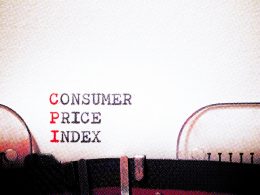“Early adopters reap the initial high returns and low correlations of a novel asset class; then one or more multiple academic and trade journal articles will describe those benefits, always accompanied by plump, curvaceous two-dimensional mean-variance plots. Last come Readers Digest versions in the mass media.” – William Bernstein
The common refrain from many financial advisors is that you should allocate 5-10% of your portfolio to commodities. They will tell you that if you look at the long-term studies that date back to the 1970s it shows that commodities offer diversification benefits and equity-like returns with similar volatility characteristics.
Unfortunately, it would have been nearly impossible to invest in those uncorrelated returns. Here’s William Bernstein on commodities:
Before 1990, almost no actual U.S. portfolio managers could, let alone did, invest in commodities futures, because doing so involved, at least metaphorically and oft times actually, getting into all of the relevant pits, dressing in funny jackets, and jostling a scrum of sweaty, panicked ex-linebackers braying for money – or at least hiring a broker who did.
Fast forward a quarter century; now the biggest players are the likes of Pimco and Oppenheimer, who have sold the gullible on the pre-1990 record of commodities futures – never mind that prior to 1990 this strategy had been, for all practical purposes, non-investible.
So it’s difficult to prove if these long-term diversification claims are legitimate.
How about the more recent experience in commodities?
Commodities never really hit the big time in portfolio allocations until the mid-to-late 2000s. And of course the reason this happened is because of Wall Street’s tendency to market the most recent asset class du jour that has shown the best performance.
Following the tech bust the S&P 500 basically went nowhere for a decade. Yet from 2002-2007 alone, a basket of commodities was up nearly 150%. That meant nearly every financial firm rushed out to show that they were an expert in the commodities arena by rolling out as many fund offerings as they could.
Once everyone rushes out to buy the new-new thing, it’s difficult to find buyers as things reverse course. That’s exactly what has happened in the last few years as commodities are still underwater since the fallout from 2008.
I decided see if Bernstein’s claims were correct. And it just so happens that the Dow Jone UBS Commodities Index returns date back to 1991 so it fits perfectly with his assertion that things may have changed once commodities became investable as an asset class.
Here are the results from 1991 along with a handful of different markets for comparison purposes (click to enlarge):
It looks like one of the claims on commodities is correct — they do have stock-like volatility which is nearly identical to the standard deviation of the S&P 500. But even with the huge returns in the mid-2000s, the performance was fairly abysmal considering total bond market returns were one-and-a-half times better with less than a third of the volatility.
A recent research paper goes a step further and shows that commodities actually increase overall portfolio volatility with a decrease in risk-adjusted returns:
At the same time, however, we have also found that this comes at the cost of an increase in volatility. Therefore, the growing appetite for commodities is likely to produce more volatile portfolios.
This paper has shown that the correlation between commodity and equity returns has substantially increased after the onset of the recent financial crisis.
At the same time, an investment strategy which also includes commodities in a portfolio produces substantially higher volatility and not always produces higher Sharpe ratios. This is at odds with the common notion that commodities serve as a hedge.
You would have been much better off with exposure in the resource-rich emerging market stocks as opposed to the actual physical commodities.
Cullen Roche has discussed about this in the past on his blog, Pragmatic Capitalism:
I prefer to think of commodities as something that are an input or a means to helping us innovate. If you’re bullish on oil price dynamics you shouldn’t go buy barrels of oil and store them in a locker somewhere. You should find the companies who leverage the use of that commodity and will benefit by innovating through the use of that input. Don’t bet against innovation. Bet on it.
The problem I have with commodities as a long-term asset class is the fact that they don’t generate any earnings or pay dividends like stocks. They don’t make periodic interest income payments like bonds. Really, they don’t build long-term value in a business sense. They are a function of cost and need.
Plus, if you hold a diversified portfolio of stocks, you should already have commodities exposure through energy, mining, agriculture and natural resource companies. Basic materials make up roughly 3% of the S&P index while energy stocks make up around 10%. Most international markets contain heavier commodity stock weightings.
I have no idea what will happen to commodities in the future. If we have severe inflation with some sort of price shock, they could earn a solid return. And I’m sure there will be short-term periods where they do better than stocks and bonds.
But I don’t think that the evidence shows that you absolutely have to hold commodities in a portfolio. A diversified global portfolio of stocks and bonds should do the trick.
Sources:
Commodities – They have (almost) no place in your portfolio (Prag Cap)
On the correlation between commodity and equity returns: implications for portfolio allocation (BIS)
Skating where the puck was: the correlation game in a flat world













